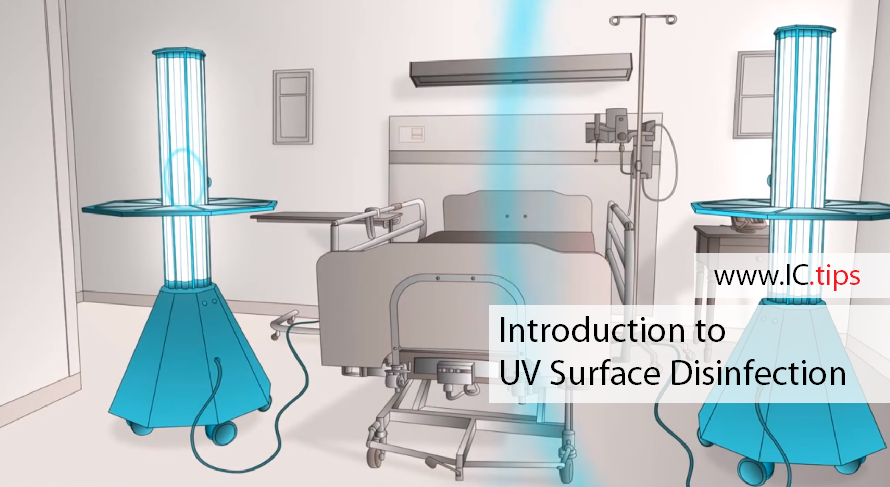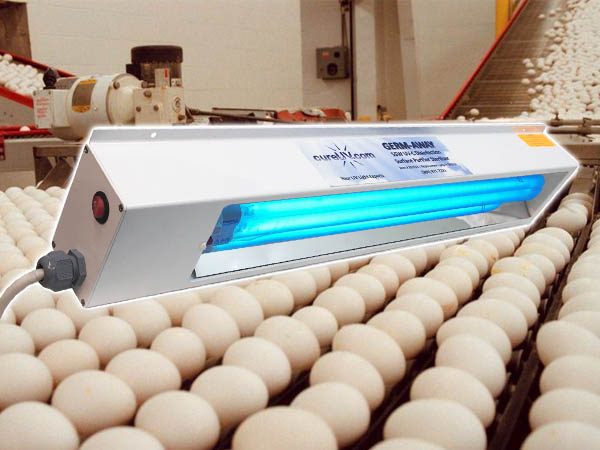UV Surface Disinfection Techniques: Maximizing Performance for Germ-Free Spaces
UV Surface Disinfection Techniques: Maximizing Performance for Germ-Free Spaces
Blog Article
UV Sanitation: The Cutting-Edge Innovation Transforming Hygiene Practices
In the world of cleanliness methods, one innovation has emerged as a game-changer: UV sanitation. From healthcare setups to food processing, UV sanitation is making its mark in numerous industries.
Exactly How UV Sanitation Functions
UV disinfection works by making use of ultraviolet light to destroy or inactivate microorganisms, providing a chemical-free and highly effective technique of sanitation. This innovation uses the power of short-wavelength UV-C light, which can harming the DNA and RNA of microbes, thus providing them unable to recreate and cause harm.
The procedure begins with the installment of UV disinfection systems, which consist of UV lamps that emit UV-C light. These lamps are strategically positioned in areas where microbial contamination is a problem, such as water treatment plants, health centers, labs, and food processing centers.
When microorganisms are subjected to UV-C light, the photons penetrate their cell walls and get to the DNA and RNA inside. The high-energy UV-C photons interfere with the genetic product by developing bonds between surrounding nucleotides, bring about the development of thymine dimers. These dimers protect against the microorganisms from duplicating, rendering them harmless.
UV disinfection is extremely effective against a variety of microorganisms, including bacteria, parasites, and viruses. It is particularly efficient against waterborne microorganisms like E. coli, Giardia, and Cryptosporidium. UV disinfection is a chemical-free technique, eliminating the requirement for potentially damaging disinfectants and decreasing the danger of damaging disinfection spin-offs.
Benefits of UV Disinfection
UV disinfection uses many advantages in the area of cleanliness, making it a highly preferred method for efficiently eliminating hazardous microorganisms. One of the key advantages of UV sanitation is its capability to supply a chemical-free service. Unlike traditional sanitation approaches that rely upon chemicals, UV sanitation uses ultraviolet light to destroy the DNA of microbes, providing them not able to replicate and trigger infections. This not only removes the requirement for possibly damaging chemicals yet additionally decreases the threat of chemical deposit on surfaces.

UV disinfection is likewise extremely functional in its applications. It can be utilized in different settings, including medical facilities, colleges, food handling centers, and water therapy plants. UV disinfection systems can be quickly incorporated right into existing cleanliness practices, offering an extra layer of security against transmittable diseases.
In addition to its efficiency and flexibility, UV disinfection is likewise ecologically friendly. It does not create any type of unsafe byproducts or deposits, making it a risk-free and sustainable method for sanitation - uv surface disinfection. Additionally, UV disinfection requires minimal upkeep and has a lengthy life expectancy, leading to price financial savings in the long run.
UV Sanitation in Medical Care Setups
In health care setups, UV sanitation has arised as a groundbreaking approach for properly eliminating harmful microorganisms. Using UV light to decontaminate surfaces and devices has gotten popularity due to its ability to provide an added layer of security against virus. UV sanitation works by releasing ultraviolet light at a certain wavelength that is dangerous to germs, viruses, and other microorganisms. This modern technology supplies numerous advantages in health care setups.
To start with, UV disinfection is a non-chemical approach, making it an eco-friendly option contrasted to traditional sanitation approaches that usually include using extreme chemicals. The use of UV light removes the demand for chemical anti-bacterials, lowering the threat of hazardous residue or chemical exposure to both individuals and medical care employees.
Furthermore, UV disinfection is highly efficient in eliminating a wide variety of microbes, including drug-resistant germs such as MRSA and C. difficile. It offers a constant and reputable disinfection procedure, making sure that all surface areas and devices are extensively disinfected, even in hard-to-reach locations.

UV Disinfection in Food Processing
The application of UV disinfection expands past healthcare setups and locates substantial worth in the world of food processing. uv surface disinfection. UV sanitation innovation is ending up being increasingly popular in the food sector because of its capability to properly get rid of unsafe microorganisms and boost food security
One of the main advantages of UV disinfection in food handling is its capacity to target a variety of microbes, including viruses, bacteria, and molds. By making use of UV light at particular wavelengths, it is feasible to interrupt the DNA and RNA of these virus, providing them incapable to duplicate or trigger damage. This modern technology can be put on numerous stages of the food handling chain, consisting of surface sanitation, devices sanitation, and water therapy.
UV sanitation gives a chemical-free and non-thermal approach of sanitizing foodstuff. Unlike traditional disinfection methods that count on chemicals or warm, UV innovation does not leave any residue or modify the preference, appearance, or nutritional worth of the food. This makes it an optimal option for sectors that call for stringent adherence to quality requirements.
Furthermore, UV disinfection systems are simple to operate and install, requiring minimal upkeep. They can be incorporated into existing handling lines without causing considerable disturbances to the production process. In addition, UV systems have a fast therapy time, enabling constant processing and lowering downtime.
The Future of UV Disinfection
One area where UV sanitation is expected to make considerable developments remains in the area of health care. With the increase of antibiotic-resistant germs and the need for much more effective sanitation techniques, UV light has the potential to play a crucial duty in reducing healthcare-associated infections. UV disinfection systems can be utilized to sanitize surfaces, tools, and even the air in medical care centers, assisting to stop the spread of harmful virus and improve client safety and security.
One more sector that might gain from developments in UV sanitation technology is the food industry. UV light has currently verified to be a reliable approach for decontaminating food and decreasing the threat of foodborne illnesses. As innovation enhances, we can anticipate to see extra efficient and economical UV sanitation systems being executed in food processing plants, guaranteeing that the food we consume is risk-free and devoid of hazardous germs.
Final Thought
In conclusion, UV sanitation is an advanced innovation that is transforming hygiene methods in health care settings and food handling. By utilizing UV light to eliminate or deactivate bacteria, it provides numerous advantages such as effectiveness, performance, and safety and security. With continuous advancements in this field, UV sanitation holds wonderful possible for the future of sanitation, providing a reliable and sustainable solution for preserving tidy and hygienic atmospheres.
UV disinfection is a chemical-free approach, removing the requirement for potentially dangerous anti-bacterials and lowering the danger of dangerous sanitation byproducts.
Unlike standard disinfection methods that count on chemicals, UV disinfection makes use of ultraviolet light to damage the DNA of bacteria, rendering them incapable to duplicate and cause infections. Unlike traditional sanitation approaches that count on chemicals or warm, UV innovation does not leave any type of deposit or alter the look at more info preference, texture, or nutritional value of the food. As technology improves, we can anticipate to see more cost-effective and reliable UV disinfection systems being applied in food processing plants, ensuring that the food we take in is risk-free and free from unsafe bacteria.
In verdict, UV disinfection is a sophisticated innovation that is transforming sanitation techniques in healthcare setups and food processing.
Report this page